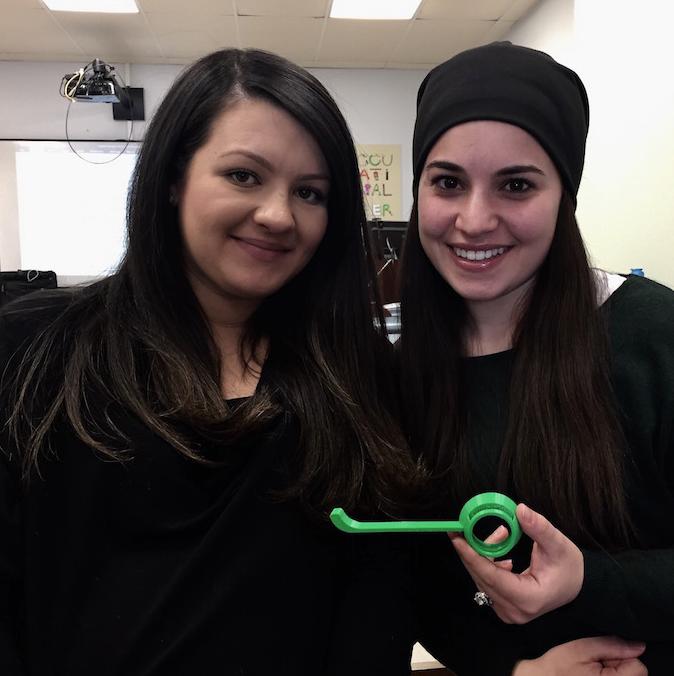Printing Their Futures
Occupational Therapists at School of Health Science Learn About 3-D Printing

As a student doing her fieldwork, Mazal Goldzweig noticed that many of her patients complained about the same thing. As homemakers, many of them wanted to cook for their families but couldn’t manage it because of their arthritis. The simplest tasks, like opening up a bottle of canola oil, became almost impossible.
“Many of my patients found cooking and cleaning to be very emotionally satisfying,” said Goldzweig, an occupational therapy student in Touro’s School of Health Sciences (SHS). “They really wanted to be able to cook for their families.”
Fortunately, in the semester after her fieldwork, Goldzweig attended the OT program’s 3-D printing class.
Led by professor Blanche Leeman, the class allows third-year OT students to take advantage of the latest 3-D printing technology and create devices to assist their patients. Together with her partner Elina Babayeva, Goldzweig developed the prototype for an assisted bottle opener that could work with different-sized bottles and has an anchor to stabilize a person’s hand. The device was printed at the end of the semester and cost a little more than a dollar.
“The purpose of the class is to introduce our students to 3-D printing and teach them how they can do this once they’re employed,” explained Leeman, a certified hand therapist and neuro therapist, who is herself a graduate of Touro College School of Health Science. “3-D printing is another way that we can facilitate independence for our patients at a low-cost.”
Goldzweig was pleased with her device and what it can do for her former patients.
“It can make them more independent,” she said. “They don’t have to rely on other people or their friends. It helps them get rid of that helpless feeling.”
SHS currently maintains two state-of-the-art Makerbot 3-D printers along with a 3-D scanner. The school received the first printer through a grant from the National Library of Medicine’s Mid-Atlantic region in 2015. (The proposal for the grant was written by Touro librarian Laurel Scheinfeld with help from Leeman.) The second 3-D printer was bought through a SHS Dean’s Seed Grant in 2016. A 3-D printer, also known as additive manufacturing, allows users to create objects through successive layering of plastic in three dimensions.
“What I found most interesting is that the students’ projects are developed through their fieldwork,” explained School of Health Science Chief Librarian Joan Wagner. “Students come up with the idea of their project based on the limitations of a person they’ve worked with. Their invention has the ability to directly impact that person.”
Among the projects that the students designed included a book stabilizer, an adaptive dog leash, a yogurt opener for stroke victims and a device that would make it easier for individuals with rheumatoid arthritis to dress themselves. All these devices cost between one and two dollars and can be made by the 3-D printer in less than three hours.
For her project, Omadevi Dhanraj thought about her own experience working with a 92-year-old patient who loved to crochet.
“She loves to crochet, but is currently unable to perform the task due to her inability to control the tension of the yarn,” explained Dhanraj.
Dhanraj and her partner, Jessica Ferrier, created a crochet aid that maintains the tension of the yarn.
Student Michelle O’Mara worked with someone suffering from carpal tunnel syndrome over the summer. Together with Ambryel Amira, she developed an adaptive leash that would enable the patient to walk his dog.
“I think it’s amazing that we had a chance to use 3-D printing this semester,” said O’Mara. “We had to think creatively about what we were doing and keep in mind that we had to design something functional that could help someone.”

